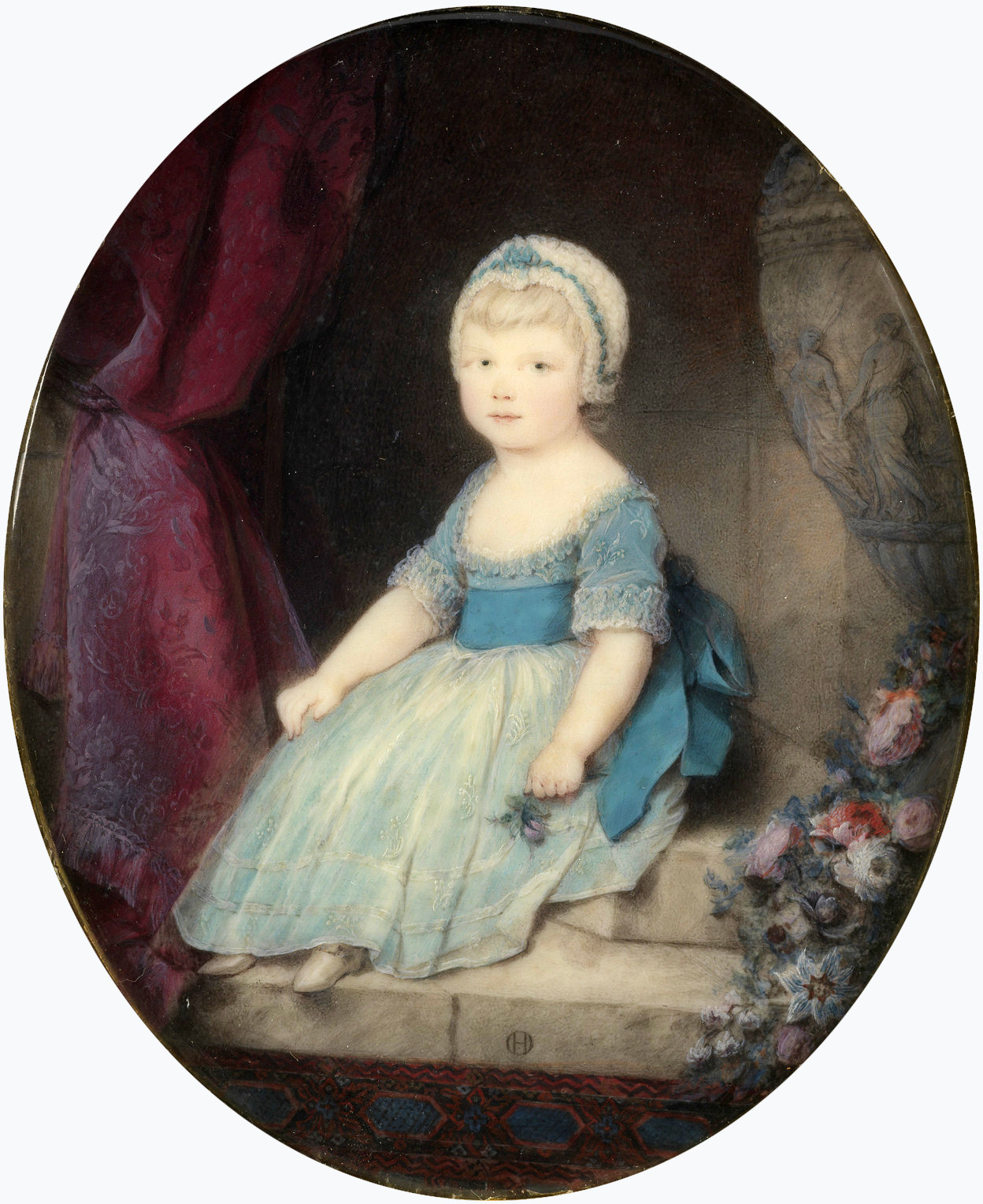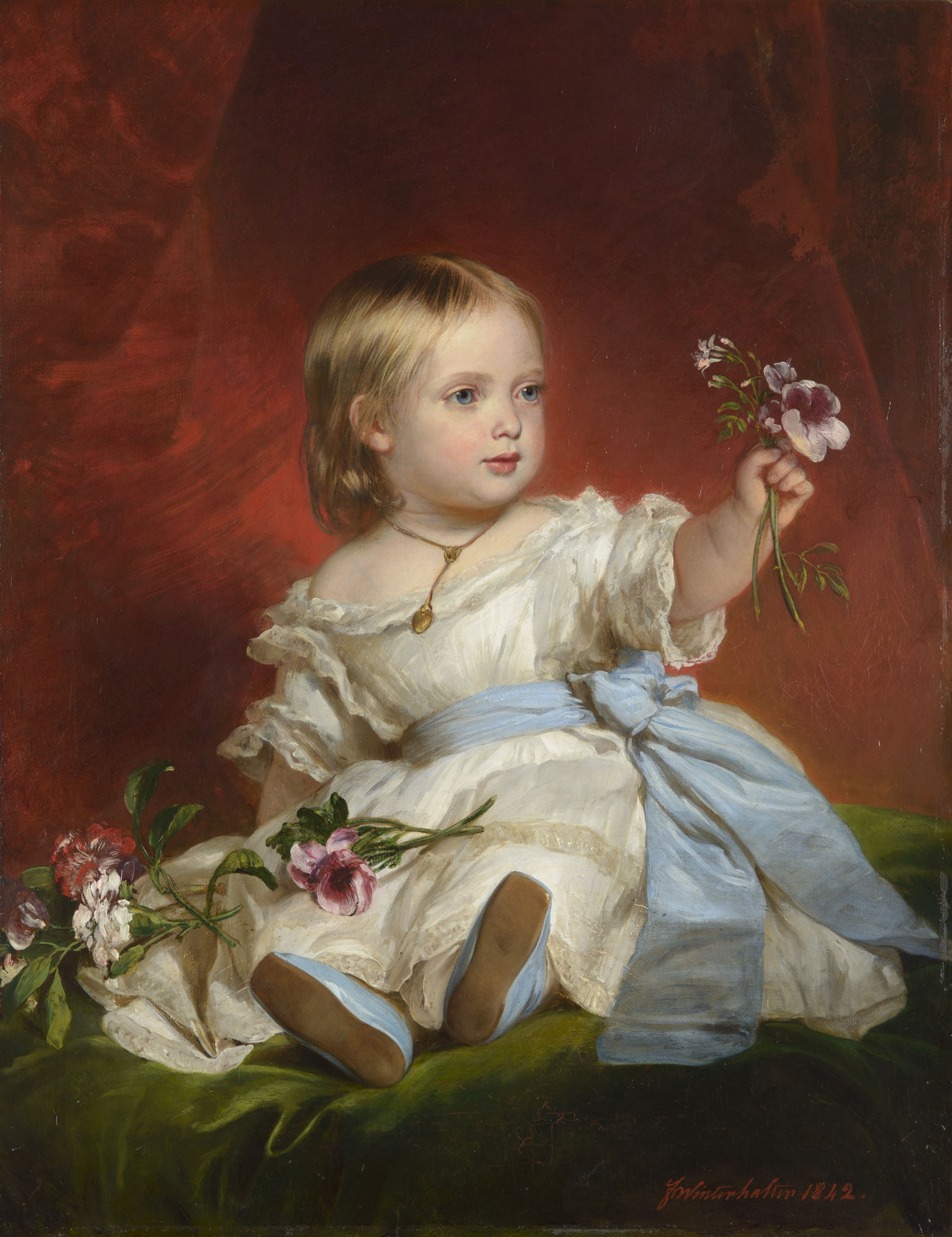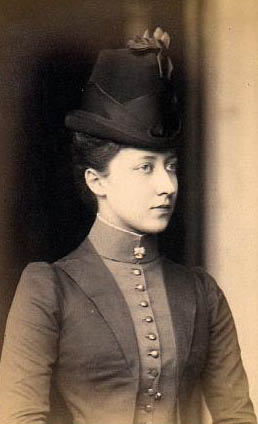If royal tradition continues, baby
Princess Charlotte of Cambridge could eventually be given the very special title of The Princess Royal. If so, she would be only the eighth princess to bear it over the course of the last 400 years.
The title can only be given to the oldest daughter of the monarch--so her father William would have to be King--and it can only be held by one person at a time, so the current Princess Royal, Charlotte's great-aunt Anne would have to be deceased. It is not an automatic title. In fact two of the princesses who were eligible to receive it did not, probably because they were already married to foreign princes at the time that they became eligible upon the accessions of their fathers.
The title of Princess Royal was first created by King Charles I for his daughter Mary. His wife was a French princess and she had grown up with a tradition that the king's eldest daughter was known as Madame Royal. Since then, the women who have borne the honor are:
 |
Anthony van Dyck
via Wikimedia Commons |
Mary Princess Royal (1631-1660). She was given the title at age 10, soon after her marriage to the Prince of Orange. At that time, she moved to the Dutch Republic with her mother and avoided the English Civil War, which cost her father his life several years later. Mary's only child was born on her 19th birthday, just days after her husband died of smallpox. She struggled to control her son's territory for him but ultimately was unable to do so. Following the execution of her father, she worked to have the Stuart monarchy restored in England. Her brothers had been left with very few assets, but Mary as Princess of Orange had much deeper pockets that she could access on their behalf. In 1660, after the restoration of the monarchy, she returned to England. She died from smallpox just a few months later at St. James's Palace. Her little boy eventually became joint monarch of Great Britain with his cousin-wife as William III and Mary II.
 |
Johann Valentin Tischbein
via Wikimedia Commons |
Anne Princess Royal (1709-1759) was the oldest daughter of King George II. She received the title when she was 18. She had survived smallpox but was terribly scarred. Thereafter, her sisters were inoculated against the disease, a progressive move in those days. Anne did, however, have the advantage of an excellent education, especially in music where her teacher was none other than George Frederick Handel. When a proposed marriage to the French King fell through, she jumped at the chance to marry the Prince of Orange. For a royal marriage, they were quite fond of each other and together they had five children, including two who were stillborn. When her husband died at age 40, she became the regent for their three-year-old son. Like today's Princess Royal of the same name, she had a somewhat abrasive personality but was fairly effective as a leader. Unfortunately, she died just eight years later of dropsy, and other regents took over for her still underaged son.
 |
| Ozias Humphrey via Wikimedia Commons |
Charlotte Princess Royal (1766-1828) was the oldest of King George III's six daughters--he also had nine sons. None of sons wanted to marry and none of his daughters were allowed to. Many complications kept the girls sheltered--their parents' overprotection, the desire not to socialize with any but loyal Tories, the French Revolution, their father's periods of "madness." Although several marriage offers were received, Charlotte was 30 years old before her father finally let her marry the widowed heir of the Duke of Wurttemburg. None of her sisters married until after their brother had taken over as Regent for their dad. Largely as a result of these delays, none of the princesses had legitimate children. Even Charlotte had only a stillborn child but she was a beloved stepmother to her husband's four children by his first wife. Charlotte and her husband initially supported Napoleon and, as thanks, her husband was made King of Wurttemburg. They later switched sides before Napoleon's downfall. Charlotte died at the age of 62 of an apoplectic seizure.
 |
Franz Xaver Winterhalter
via Wikimedia Commons |
Victoria Princess Royal (1840-1901) is perhaps the best-known historical Princess Royal. As the smartest and oldest child of Queen Victoria, she was the favorite of her father Prince Albert. Her brother, the future King Edward VII, thought for a time that she was going to be the monarch and was not all pleased when he learned that was his destiny instead. Victoria fell in love as a young teenager and was allowed to marry the much-older future German emperor. Despite her happy marriage, she did not have good relationships with her oldest children. Things only worsened when her husband died of cancer only months after becoming emperor. Their eldest son, the infamous Kaiser Wilhelm, immediately began rifling through his mother's things and did everything he could to lessen her influence and authority. All together, Vicky, as she was known had eight children, but lost two little boys young--one to meningitis and one to diptheria. She died from cancer only months after her famous mother in 1901 at the age of 60.
 |
| via Wikimedia Commons |
Louise Princess Royal (1867-1931) was Vicky's niece and the third child of King Edward VII. Her parents household was much less restricted than other royal homes, and these most important grandchildren of Queen Victoria earned the nickname "the Wild Waleses" while their father was Prince of Wales. Nevertheless, Louise and her two younger sisters were also incredibly shy, and also were known as "the whispering Waleses" for the way they spoke in the presence of others. There was a 17-year age difference between Louise and her aristocratic husband, the Duke of Fife. By the traditions of the day, their two daughters did not receive royal titles because these only went to male-line descendants. Louise's father did not like that his granddaughters were merely ladies. In 1905, when he made Louise The Princess Royal, he also gave her daughters the rank and style of Her Highness Princess Maud of Fife and Her Highness Princess Alexandra of Fife. Louise's whole family survived a shipwreck in Egypt in 1911, but her husband never really recovered and died within the year. Louise lived another 20 years.
 |
Bain News Service
via Wikimedia Commons |
Mary Princess Royal (1897-1965) was Louise's niece and the third child of King George V. Despite her own shyness, her first foray into public life was on a fairly large scale: as a teenager, she conceived a program to deliver Christmas gifts to all of the British Empire service members fighting in the Great War. (
Read more here.) Later in the war, she took up nursing, but returned to a somewhat private life after the war, taking on occasional royal duties, especially in support of nursing and the Girl Guides. Like her aunt, the previous Princess Royal, she married a nobleman, the Earl of Harewood, and had two children--both boys in her case. Her children were never raised to the rank of princes; those days were over. She was given the title of Princess Royal in 1932, a year after her aunt's death. Mary's husband died shortly after World War II, and she lived a quiet life in the country, dying 17 years later, at the age of 67.
Anne Princess Royal (1950- ) is the only daughter of Queen Elizabeth II. Known for her no-nonsense approach to everything and her career as an equestrienne, she has always been one of the hardest working members of the British Royal Family, routinely racking more engagements than most of the rest of the family. She and her first husband were brought together by their shared sport. When they married, they declined titles for him and for their children. Their children are simply Peter Phillips and Zara Phillips Tindall, and they now have three granddaughters. After love letters from the princess to a court official were revealed, Anne divorced her first husband and married her paramour. He likewise took no title. Their marriage has lasted nearly 23 years. (Her granddaughters, Savannah and Isla Phillips look remarkably like this childhood portrait of her.)
Since Prince Charles has no daughters, the next Princess Royal will likely be his new granddaughter Princess Charlotte, which makes it look like there is a pattern to the naming of these very special princesses. The first three were Mary then Anne then Charlotte. The last two have been Mary and Anne; so I guess it was inevitable that the new princess would be Charlotte and the next, little Prince George's future daughter, will be Victoria! Hope I'm around long enough to see if I'm right.






Interesting article. It is hard to think ahead to a time where Princess Charlotte will be old enough to inherit this title. It seems as though there is no particular age for the title to be granted. I think it is better to give the title when the recipient is older. In the case of Princess Anne, it seemed only fitting for her to receive it after many years of proven, dedicated duty, whereas, had she received it shortly after Princess Mary's death, it might have been more of a hindrance for a princess who has never struck me as someone who stands on ceremony.
ReplyDeleteMarilyn, Anne turned down the offer several times to be Pss Royal. It was only when her marriage was in tatters, and the Mark's illegitimate child, did she finally agree ... because it meant that she would not longer be styled as HRH The Princess Anne, Mrs. Mark Phillips.
ReplyDelete